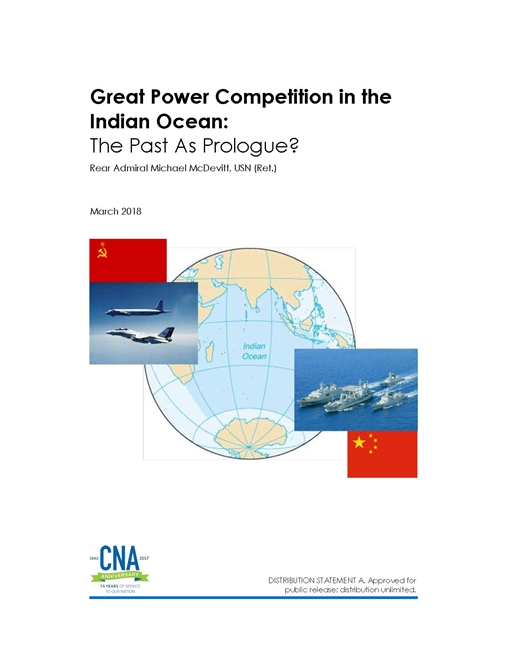The Chinese flag has become ubiquitous on the high seas around the world, especially in the Indian Ocean where the presence of Chinese warships has become routine. The People’s Liberation Army Navy (PLAN) has been conducting anti-piracy operations continuously in the Arabian Sea since December 2008.
In the almost nine years since that first deployment, China has adroitly blended its shipping protection mission with traditional naval diplomacy by making certain its warships routinely conduct goodwill visits and naval exercises with most of the Indian Ocean littoral countries. China’s growing interest in the Indian Ocean in general and the Arabian Sea in particular is directly tied to its worries about the vulnerability of its tankers as they ply the sea lanes carrying oil from the Persian Gulf to China, as well as the large container ships that travel nearly the same sea lanes to deliver Chinese exports to the Middle East and to Europe via the Red Sea and Suez Canal. Chinese strategists are well aware of the fact that potentially hostile naval forces are present in numbers in these waters. For example, its 2015 defense white paper, entitled China’s Military Strategy, stated:
With the growth of China’s national interests…the security of overseas interests concerning energy and resources, strategic sea lines of communication (SLOCs), as well as institutions, personnel and assets abroad, has become an imminent issue …
Over the years, official Beijing angst regarding this issue has led to a great deal of scholarly speculation over whether China would create bases along the Indian Ocean littoral in order to protect its sea lines of communication. Xi Jinping’s much- ballyhooed “One Belt, One Road (OBOR)” plan to economically connect Eurasia, with all roads leading to Beijing, effectively ended that debate. To support and begin to protect the maritime portion of OBOR, also known as the 21st Century Maritime Silk Road, it was necessary for Beijing to back away from its long-standing policy of criticizing other nations’ overseas bases as a feature of hegemonic behavior. Beijing has come to appreciate the value of support facilities along the long maritime route across the Indian Ocean.
China is actively engaged in what could be characterized as a “place and base” approach for permanent and assured Indian Ocean access for its navy. It now justifies its logistics “outposts” in the western Indian Ocean as a means of contributing to regional security and development.
Download reportDISTRIBUTION STATEMENT A. Approved for public release: distribution unlimited.
Details
- Pages: 38
- Document Number: DOP-2017-U-015750-Final2
- Publication Date: 2/26/2018
